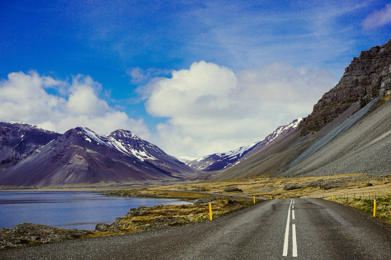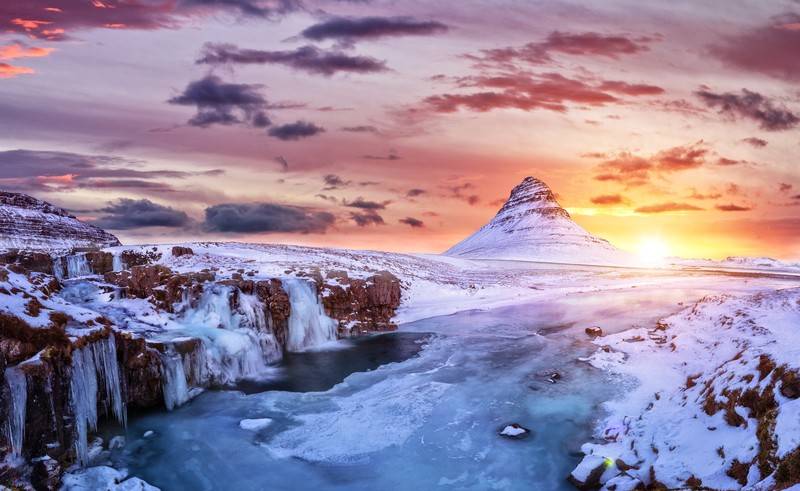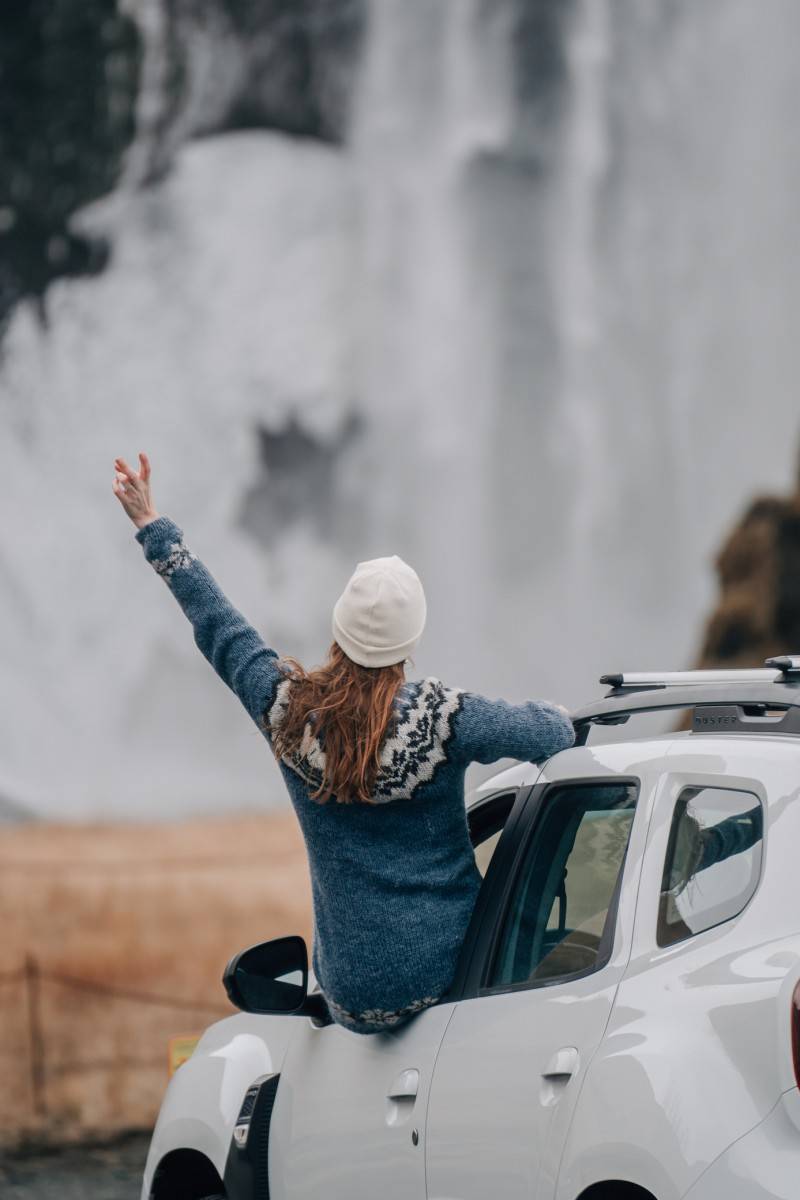What to Wear in Iceland and Weather in Iceland
Discover the perfect outfits for Iceland's ever-changing weather. From layers to waterproof gear, we've got you covered for an unforgettable adventure.
This question is not easy to answer.
Iceland is renowned for its awe-inspiring landscapes, dramatic volcanoes, majestic waterfalls, and mystical northern lights. But behind this stunning beauty lies a force that shapes the country's character like no other—the Icelandic weather. In this blog, we'll embark on a captivating journey to understand the intricacies of Icelandic weather and what clothing is suitable for Icelandic weather.
Dynamic and Unpredictable weather
Icelandic weather is known for its dynamism and unpredictability. The country's geographical location between the North Atlantic Ocean and the Arctic region exposes it to ever-changing weather patterns. One moment you may experience sunshine, and the next, heavy rain or snowfall. It's a place where you can share all four seasons in a single day.
A strong Gulf Stream warms the North Atlantic Drift, which flows along the southeast coast of Iceland and keeps the island's west side a few degrees warmer than the northeast side, which is cooled by the Iceland and Greenland ocean currents flowing from the Arctic. The strong sea breeze entering the country usually brings a cold climate. Be prepared to experience many windy days in Iceland.
It cannot be said that Icelanders get to experience all the seasons every year. For some, there is eternal autumn or winter in Iceland. Despite being relatively mild, the summer provides long daylight hours and the opportunity to explore the country's stunning landscapes under the Midnight Sun. Winters bring shorter days, colder temperatures, and the chance to witness fascinating phenomena like the Northern Lights and frozen landscapes.

Icelandic summer
Icelandic summers are a fascinating time that offers unique experiences and contrasts to the country's long, dark winters. The summer season is ideal for embarking on a road trip along the famous Ring Road (Route 1), which circumnavigates the entire country. The improved weather conditions and longer daylight hours allow for more flexibility and a chance to explore Iceland's diverse regions, including stunning waterfalls, black sand beaches, and volcanic landscapes.
One of the most fascinating aspects of Icelandic summers is the phenomenon known as the Midnight Sun. Due to Iceland's high latitude, the sun remains visible for nearly 24 hours a day during the peak of summer. This extended daylight allows endless opportunities to explore and enjoy outdoor activities, even during the late evening hours. Iceland experiences relatively mild temperatures during the summer months, with average highs ranging from 10 to 15 degrees Celsius (50 to 59 degrees Fahrenheit). The arrival of summer brings about a remarkable transformation in Iceland's scenery. The once snow-covered landscapes burst into vibrant shades of green.
Icelandic summers provide ample opportunities for hiking and outdoor adventures. The rugged landscapes offer an array of hiking trails that lead to magnificent waterfalls, glaciers, geothermal areas, and volcanic formations. Popular hiking destinations include Landmannalaugar, Thorsmork, and Skaftafell, National Park.
Iceland's geothermal activity provides a unique opportunity to enjoy relaxing hot springs and geothermal baths. Popular attractions like the Blue Lagoon, Mývatn Nature Baths, and the Secret Lagoon offer rejuvenating experiences amidst stunning natural surroundings.
Summer wear in Iceland
The key to dressing for Iceland's climate is layering, regardless of the season. Lightweight woolens, rain- and windproof jackets and trousers, and good walking/hiking shoes are essential if you plan to do any touring in nature.
If you visit Iceland in summer, bringing hiking shoes is advisable, even though you are not planning a hike. Suppose you only plan road trips around Iceland and visit many outdoor destinations. In that case, we recommend wearing waterproof hiking shoes. However, if you are not planning any adventurous outdoor activities, you are safe to wear sneakers or trainers.
Although it is summer, warm and suitable outdoor clothing is essential in Iceland, where you can experience many types of weather in one day, such as sunshine, heavy rain, and wind. You should not dress like it's summer.

Icelandic winter
Icelandic winters are a magical and transformative time characterized by stunning landscapes, fascinating natural phenomena, and unique cultural traditions. The dazzling Northern Lights display is one of the most awe-inspiring natural phenomena that draw visitors to Iceland during winter. Clear nights provide optimal conditions for witnessing the dance of colorful lights across the sky, creating an ethereal and unforgettable experience.
Iceland's landscapes undergo a remarkable transformation during winter, transforming into a snowy wonderland. Snow-capped mountains, frozen waterfalls, and vast white expanses create a picturesque backdrop for outdoor activities and exploration. Iceland's high latitude means that winter days are short, with only a few hours of daylight. This unique lighting creates a mystical atmosphere and offers a chance to witness stunning sunrises and sunsets that paint the sky in breathtaking hues.
Iceland's winter season offers a variety of thrilling activities for adventure enthusiasts. From snowmobiling across glaciers and ice-climbing frozen waterfalls to dog sledding through snow-covered landscapes, there's no shortage of exhilarating experiences. Winter provides a rare opportunity to explore the mesmerizing ice caves within Iceland's glaciers. These natural wonders boast intricate formations of blue ice, creating a surreal and otherworldly environment for visitors to explore.
Iceland's geothermal activity is particularly delightful during winter. Relaxing in natural hot springs or soaking in geothermal pools such as the Blue Lagoon or one of many local pools is a popular pastime, offering a warm respite from the chilly temperatures.
With the colder temperatures, Icelanders embrace the "hygge," a Danish word that embodies the feeling of coziness and contentment. It involves embracing the warmth and comfort of indoor spaces, enjoying hot drinks, and spending quality time with loved ones.
Winterwear in Iceland
How cold is it in Iceland in winter? It's warmer than expected, with average temperatures in Reykjavik around 0°C (31°F) in January. Don't let that mislead you, though. The wind makes it feel much colder. However, you might experience more rain than snow and cold winds, which can be very strong. Iceland is very cold in winter. When traveling to Iceland in winter, you must dress as warmly as possible and be prepared for everything. Warm outdoor pants, winter jackets, hats, mittens, scarves, and warm socks are essential. Waterproof winter boots with a good grip are a must. It's recommended even though you are just going to visit the capital. Therefore, winter clothing in Iceland is straightforward - anything that keeps you warm!
Icelandic winters offer a unique and enchanting experience, inviting visitors to witness the country's breathtaking natural wonders, engage in thrilling activities, and immerse themselves in the warmth of cultural traditions. It's a time of ethereal beauty and a chance to appreciate the tranquil side of Iceland's captivating landscape.
What to pack, then?
We have put together a packing list for your trip to Iceland. But note there is always a chance that you may need something not on the list or you won't need something on the list. As mentioned, the weather can always be dramatic, extreme, and changeable year-round.
Summer packing list (June, July, August)
- Short and long-sleeved shirts
- Light pants or leggings, as well as thicker pants (hiking pants)
- Wind and waterproof pants
- Light sweater
- Wind and waterproof jacket
- Light waterproof gloves
- Light hat
- Hiking socks
- Waterproof hiking shoes
- Waterproof backpack
- Swimsuit and a quick dry towel
Winter packing list (September-May)
- Thermal underwear (merino wool)
- Wool or fleece sweater
- Thick wind and waterproof hiking
- Wind and waterproof winter jacket
- Waterproof hiking shoes or snowboots
- Waterproof gloves, winter hat, and a scarf
- Thick hiking socks and wool socks
- Waterproof backpack
- Swimsuit and a quick dry towel

We hope the dramatic and changeable weather allows you to visit Iceland. Although the weather can be challenging, Iceland is a beautiful country to experience and explore. In all kinds of weather! With Iceland's ever-changing weather, dressing appropriately is essential. Layering is crucial in accommodating sudden temperature shifts. Packing a waterproof and windproof outer layer and sturdy footwear is recommended. Being prepared for various weather conditions ensures you can enjoy the Icelandic experience fully.
If you are planning to rent a car in Iceland and you are unsure what type of vehicle will suit for your trip you can always contact us at Icerental4x4.
